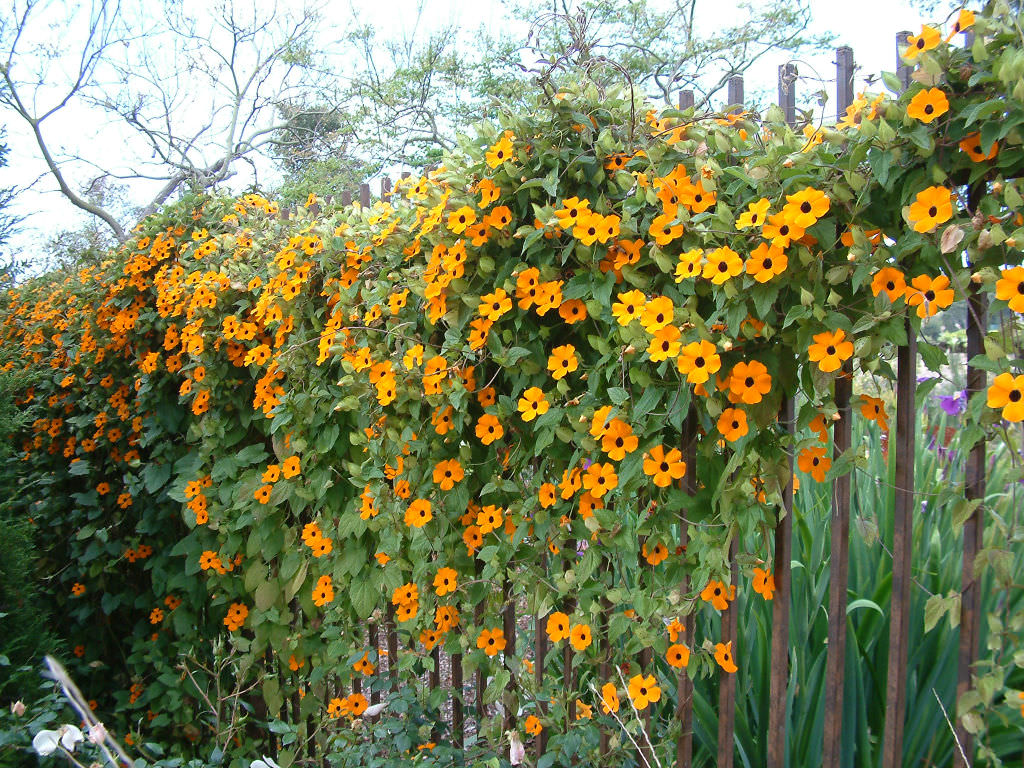

The leftover seeds provide a good food source for non-migratory birds during the winter months. You can still leave a black-eyed Susan stalk standing for the winter, and there are some good reasons to doing so. When spring comes, the black-eyed Susan will regenerate from the soil up. You may choose to simply cut the stem of the black-eyed Susan almost all the way down to the ground for the cold months. Managing to look very bushy but never getting out of hand.
:max_bytes(150000):strip_icc()/Blackeyedsusancontainer-GettyImages-683742643-ff2eea06a4374ef79a73127936c64e6b.jpg)
You don't have to prune back black-eyed Susan for winter, but doing so will save you a lot of clean-up in the spring. Black-Eyed Susan Vine Seeds A bushy but very manageable twining vine 5 Reviews Write a Review Nothing evokes a country gate or rustic mailbox as cheerily as a twining Black-Eyed Susan Vine, with masses of blooms all summer and large, lush foliage. (Thunbergia alata) Cheerful and fast growing, Black-Eyed Susan vine is a tender perennial native to Asrica and Asia thats grown as an annual in most. This will encourage bushier growth instead and encourage your vine to produce more blooms. When they reach this height, simply lop off four to six inches below the flower petals during the middle of the growing season. If you want to promote a shorter and bushier growth for your black-eyed Susan flowers, you can cut them back where they reach about 12 inches in height. Various cultivars offer flowers in shades of red through pink, apricot, pale. Borne in the leaf axils, they bloom throughout the summer and fall. across (5 cm), adorned with dark purple-black throats. This can lead to problems controlling growth, so it is best to deadhead anyway. Thunbergia alata (Black-Eyed Susan Vine) is a vigorous twining evergreen vine, often grown as an annual, with lush heart-shaped green leaves and attractive single yellow-orange flowers, 2 in. Old blooms, if left alone, will turn into seed heads that will eventually reseed the plant. This will allow your black-eyed Susan to create new blooms in place of the dead ones instead of going dormant faster than it should. Deadheading a flower is simply the practice of clipping a decaying bloom just below the base of the petals or pinching it off with your fingers. When this happens, you should deadhead those flowers. Deadheading Black-eyed SusansĪfter your black-eyed Susan blooms, some of the flowers may become faded or slightly wilted. It will be more important to prune your annuals in the interest of growth control, but pruning during the growing season will benefit both varieties and promote healthy blooms. Perennials will die in the autumn and need to be reseeded in the spring, while annuals will self-sow in preparation for the next growing season. Black-eyed Susans actually come in both annuals and perennials, so care can vary depending on which variety you have.


 0 kommentar(er)
0 kommentar(er)
